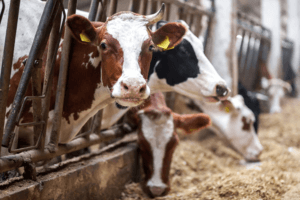Effective resource allocation and prioritization among sources of suffering requires finding ways to quantify their burden in a comparative way. In the Welfare Footprint framework, the cumulative load of negative affective experiences endured by animals are quantified using a biologically meaningful metric: time spent in pain of four intensities. This granulated view of suffering is clear and intuitive and can be traced back to evidence, aiding resource allocation and decision-making processes targeting different priorities. Currently, disaggregated estimates can also rank most welfare challenges and farm animal production scenarios in terms of suffering
Yet, challenges arise when this (or other metrics) are asked to balance the intensity and duration of suffering. Foremost among these is the uncertainty associated with equivalence factors, which are needed for converting time spent in different intensity levels to a common metric. So far, these factors are not empirically substantiated, and carry high levels of uncertainty.
Additionally, with aggregate estimates of time suffering, references to the actual experiences of animals are lost. While estimates of 10 minutes in Excruciating or Disabling pain are readily understandable by any audience, aggregate estimates of time in pain do not have an intuitive meaning. For example, it is not clear if a long time in Disabling-equivalent pain is dominated by experiences of chronic or acute suffering, or some combination thereof. Likewise, there is also an ethical puzzle regarding the validity of balancing different levels of suffering [41]. For example, aggregate estimates of time in pain in a population with individuals enduring intense pain could be similar to that of a population where no individual suffers intense pain, but a larger fraction of individuals experience milder pain for a sufficiently long time. The extent to which extreme suffering concentrated in fewer individuals can be compensated by milder suffering in a large number of individuals is unclear.
In short, the seemingly straightforward concept of a weighting system between pain intensities is still riddled with limitations. Until equivalences in the dimensions of pain are better understood, we favor a disaggregated approach. In its current form the Welfare Footprint framework can rank most events, scenarios and systems. Where difficult trade-offs are present, the framework can be extended further by examining which weights would steer different decision-making paths, and then determine whether such a weight is scientifically justifiable.
We illustrate this possibility by considering estimates of Cumulative Pain, at each intensity, for some of the most common welfare challenges commercial chickens experience over their lives, including slaughter (Table 2).
Table 2. Measures of Cumulative Pain in chickens (estimated seconds in pain, at each intensity). Estimates correspond to the midpoint of uncertainty intervals [42,43], and do not consider the welfare impacts of the secondary effects of the harms described. ‘Average flock member’: estimated time in pain weighted by the prevalence of the problem (considers that not all individuals experience the problem, and/or experience different degrees of severity). ‘Worst possible case’: individual enduring the worst possible outcome.
Seconds in Pain | Hurtful (1) | Disabling (2) | Excruciating (3) |
(A) Effective electrical waterbath stunning in broilers (average flock member) | 62 | 70 | 1 |
(B) Electrical waterbath set to low carcass damage (average flock member) | 68 | 156 | 70 |
(C) Electrical waterbath stunning (any form) (worst possible case: conscious until scalding) | 154 | 367 | 116 |
(D) Lameness in fast-growing broilers (average flock member) | 805,464 | 193,068 | 0 |
(E) Lameness in fast-growing broilers (worst possible case: gait score 5 at slaughter) | 1,384,200 | 1,591,920 | 0 |
(F) Chronic hunger in fast-growing broiler breeders (all individuals assumed to undergo same experience) | 15,014,160 | 7,056,000 | 0 |
(G) Behavioral Deprivation in caged hens (all individuals assumed to undergo same experience) | 10,930,500 | 1,165,500 | 0 |
(H) Depopulation and Transport in cage-free hens (average flock member) | 41,184 | 90,180 | 2 |
(I) Keel bone fractures in cage-free hens (average flock member) | 5,201,352 | 371,952 | 0 |
(1) pain that disrupts the ability of individuals to function optimally; (2) continuously distressing pain that takes priority over most behaviors (drastic reduction of activity and inattention to other stimuli); (3) extreme level of pain that would not normally be tolerated even if only for a few seconds.
The table shows that for an intervention that reduces extreme forms of suffering during slaughter (chiefly Excruciating pain) to be favored over one that averts less-intense suffering (including problems such as lameness in fast-growing broilers, chronic hunger in breeders or behavioral deprivation in caged hens), Excruciating pain would need to be perceived as being many orders of magnitude worse than Disabling or Hurtful pain. For instance, the average broiler stunned with electrical parameters set to reduce carcass damage (i.e., less effective at causing loss of consciousness, row ‘B’ in Table 2) endures about 70 seconds of Excruciating pain, while lameness causes, on average, 1,384,200 and 1,591,920 seconds of Hurtful and Disabling pain, respectively (‘D’). To justify prioritizing improvements in electrical stunning parameters over enhancements in lameness based solely on the reduction of suffering, the aversiveness of Excruciating pain would need to be perceived as approximately 3,000 times more severe than Disabling pain, or over 14,000 times more severe when considering the Disabling and Hurtful pain together. When comparing the most severe outcomes—birds that are scalded alive during slaughter (‘C’) against those suffering from the most severe form of lameness, with a gait score of 5 at the time of slaughter (‘E’)—the perceived aversiveness of Excruciating pain would need to be about 13,000 times greater than that of Disabling pain to justify a focus on stunning reforms over lameness improvements. Similarly, for interventions aimed at enhancing stunning parameters (‘B’) to be deemed more beneficial to welfare than those targeting the mitigation of chronic hunger in fast-growing female broiler breeders (‘F’), the aversiveness of Excruciating pain would need to be considered over 300,000 times worse than that of Disabling or Hurtful pain.
In determining the plausibility that Excruciating pain is several orders of magnitude more averse than pain intensities that are still very distressing (such as Disabling pain), it is also necessary to consider that estimates of the welfare impacts of the farm-level harms described, such as lameness, behavioral deprivation and chronic hunger, do not include their secondary effects. For example, in the case of chronic hunger, secondary effects emerging from feed restriction include aggression, higher incidence of feather pecking, skin lesions, foot pad lesions, disrupted resting, impaired immunity and long-term consequences for the welfare of offspring (meat chickens) through epigenetic effects [43]. In the case of lameness, by-products include a greater risk of infection, dehydration, contact dermatitis, the frustration to perform highly motivated behaviors and sleep disruption [43]. Should these effects be considered, they would require an even higher aversiveness ratio for Excruciating pain compared to Disabling and Hurtful pain.
While these observations align with the view that interventions targeting prolonged suffering may warrant prioritization absent evidence that the welfare impact of intense brief pains exceed more moderate pains by orders of magnitude [7], we suggest that in case of difficult trade-offs decisions should be determined on a case-by-case basis, considering species-specific pain responses, context of decision, and full range of welfare effects associated with the intervention. For instance, while the secondary effects of intense suffering at slaughter does not have lasting secondary effects due to the immediacy of death, intense brief suffering at early life (e.g., bodily mutilations) are likely to have multiple and profound welfare consequences, such as heightened pain sensitivity and reduced stress resilience.





